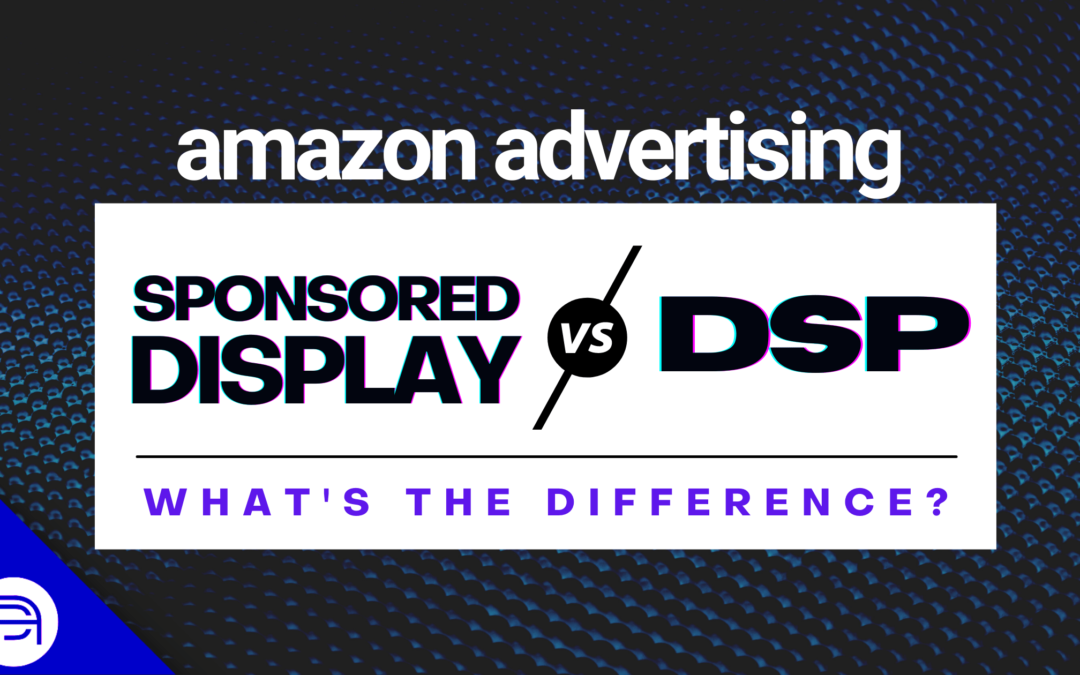Within the last couple of months, Amazon Sponsored Display has quickly increased its capabilities and will most likely continue to grow its features. This means advertisers will have more customization opportunities and access to advertising tools that were previously only available to those who used Amazon DSP.
But what does this mean for your brand and where should you go from here?
Let’s dive into the key differences between Amazon’s Sponsored Display and DSP, and what the best use cases are for each.
Overview – Amazon Advertising Sponsored Display VS DSP
The main difference between the two platforms is that Amazon DSP allows for in-depth customization of targeting methods. However, it can be more costly and requires advanced configuration while Sponsored Display is easier to configure for all Amazon advertisers.
See below for a breakdown of each option’s capabilities:
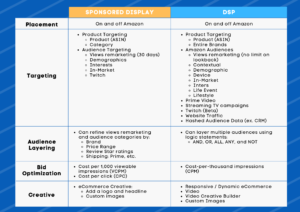
Pros and Cons
There are several pros and cons that advertisers should take into account for each option, which we’ve broken out below.
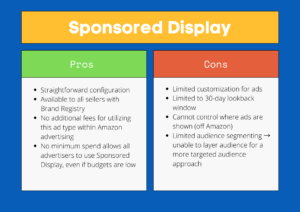
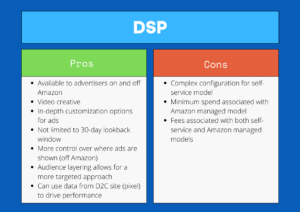
Use Cases
Now that we’ve covered all of the nitty-gritty details, let’s break things down further to see which use cases work best for each respective option.
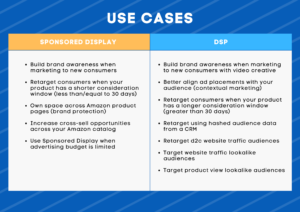
Overall, we recommend using both platforms to your advantage to capitalize on the benefits of both Sponsored Display and Amazon DSP. Using both of these options will give you greater flexibility and allow for a more robust marketing strategy.
Need additional support to advance your Amazon advertising? Our dedicated Amazon practice can help you formulate a customized strategy optimized for your specific business goals. Reach out to [email protected] today to speak with our team of Amazon advertising experts!
– Sara Rosenberg, eCommerce Strategist

